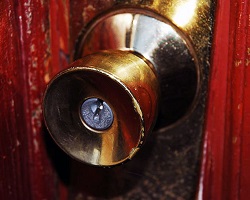Passing Pathogens

You are sitting in class, reading. The room is quiet and no one is talking. A sudden loud noise causes you to jump. Someone has sneezed. It was especially loud because they didn’t cover their mouth. You don’t think much of it and go back to reading.
Two days later, more people are sneezing. The day after that, half of your class is sick at home. How did this happen? You think back to the sneeze. Was that how it started?
Did you know that when a person sneezes, water droplets from their mouth and nose rush out at up to 150 feet per second? That’s over 100 miles per hour!

Additionally, a single sneeze can release around 40,000 separate droplets of liquid that might carry pathogens. This can spread pathogens over a wide area and can cause many infections. The spread of pathogens in this way is called airborne transmission.
A lot of pathogens cause symptoms, or signs of illness, like sneezing and coughing. This way, they can spread, infecting as many people as possible. This is why it is so important to cover your mouth when you sneeze and to wash your hands.
Limiting the Spread of Infection
The very best way to prevent catching or spreading a pathogen is to wash your hands regularly with soap and water.

There are two kinds of person-to-person disease transmission: direct contact and indirect contact. Direct contact is when one person transfers a pathogen to another by direct touch. This can happen in the form of a handshake for example.
Indirect contact occurs when someone with a disease touches an object and accidentally leaves some of the pathogen. The next person who touches that object can get infected.
To prevent these kinds of transmission, we can use antiseptics and disinfectants. Antiseptics are used on our skin, like the soap we use when we wash our hands. Disinfectants are used to kill microorganisms on surfaces, but not the skin.
Images via Wikimedia Commons.
Read more about: Puzzling Pathogens
Bibliographic details:
- Article: Passing Pathogens
- Author(s): Dr. Biology
- Publisher: Arizona State University School of Life Sciences Ask A Biologist
- Site name: ASU - Ask A Biologist
- Date published:
- Date accessed:
- Link: https://askabiologist.asu.edu/passing-pathogens
APA Style
Dr. Biology. (). Passing Pathogens. ASU - Ask A Biologist. Retrieved from https://askabiologist.asu.edu/passing-pathogens
Chicago Manual of Style
Dr. Biology. "Passing Pathogens". ASU - Ask A Biologist. . https://askabiologist.asu.edu/passing-pathogens
Dr. Biology. "Passing Pathogens". ASU - Ask A Biologist. . ASU - Ask A Biologist, Web. https://askabiologist.asu.edu/passing-pathogens
MLA 2017 Style

People have known how to decrease transmission of pathogens for decades. This ad from the 1940s urges you to cover your coughs and sneezes.
This activity has a companion experiment Let the Germs Begin.
Be Part of
Ask A Biologist
By volunteering, or simply sending us feedback on the site. Scientists, teachers, writers, illustrators, and translators are all important to the program. If you are interested in helping with the website we have a Volunteers page to get the process started.

